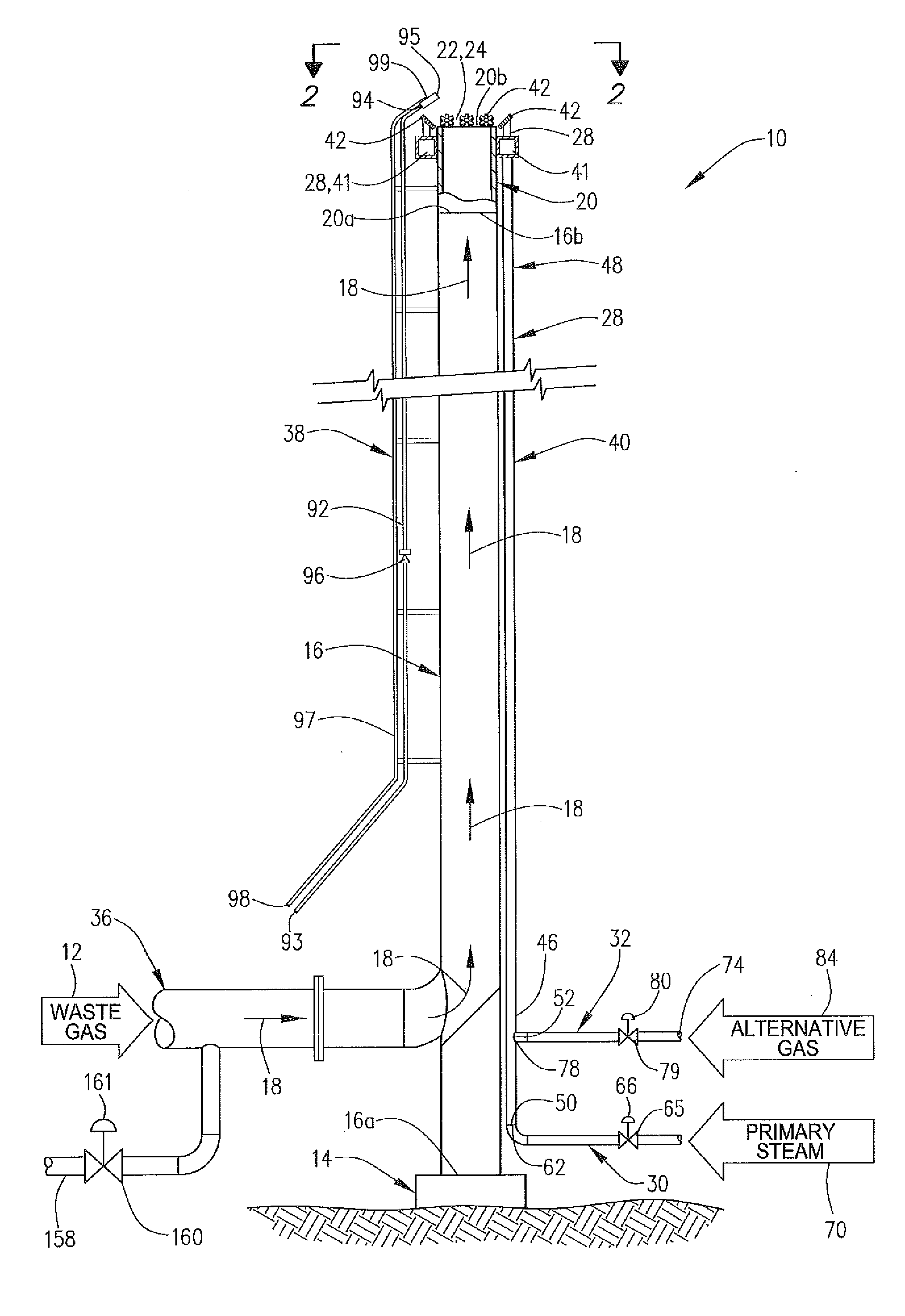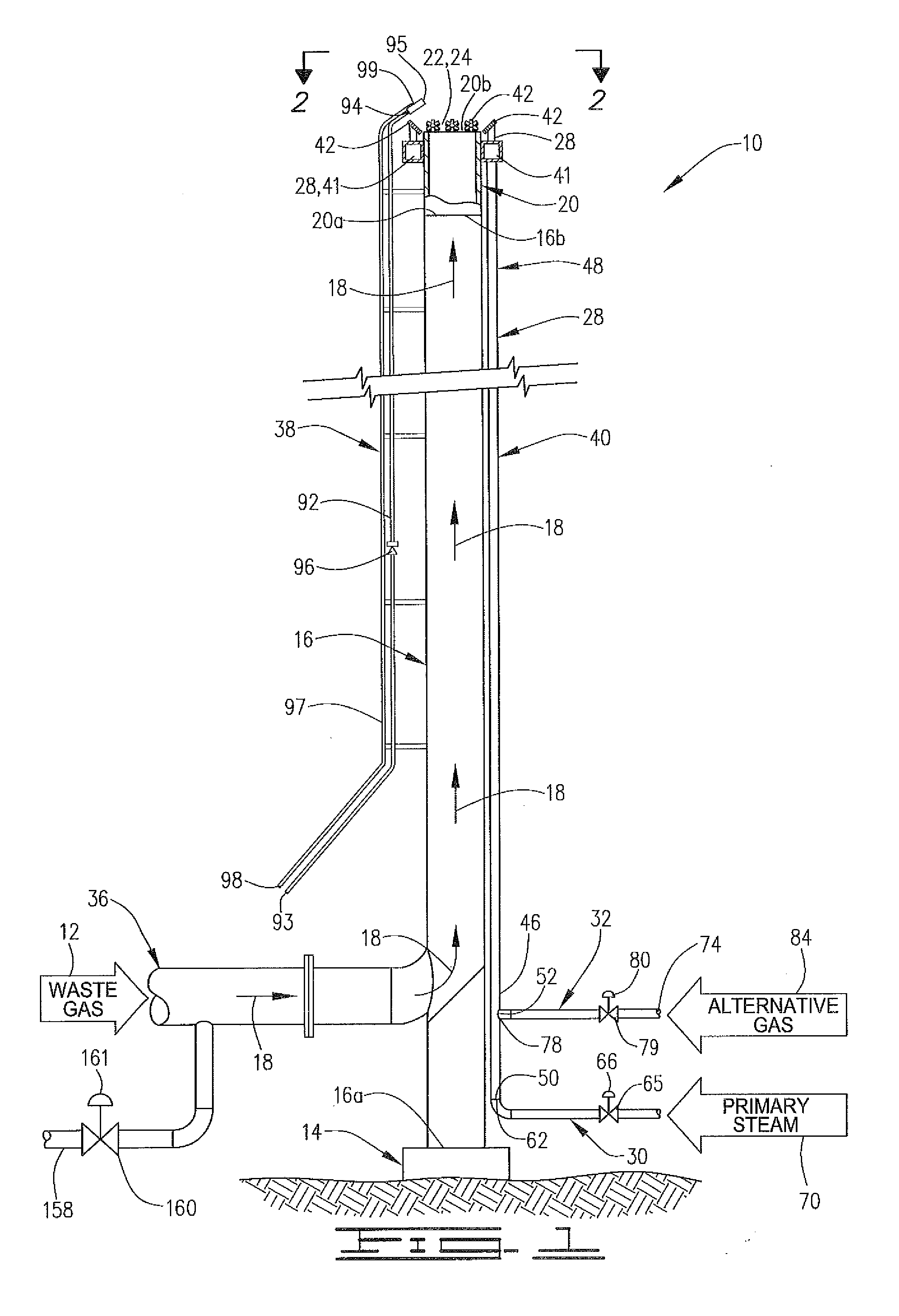Hybrid flare apparatus and method
- Summary
- Abstract
- Description
- Claims
- Application Information
AI Technical Summary
Benefits of technology
Problems solved by technology
Method used
Image
Examples
Embodiment Construction
[0076]As used herein and in the appended claims, the terms set forth below shall have the following meanings:[0077]A “facility” means a production facility, refinery, chemical plant, processing plant or any other facility from which waste gas is released due to venting requirements, shut-downs, upsets, emergencies or other reasons.[0078]“Waste gas” means the organic material, nitrogen, and any other gases that are released from the facility for disposal and received by the flare assembly.[0079]“Vent gas” means the waste gas as defined above together with other gases and vapors, if any, added to the waste gas stream before the waste gas stream enters the flare tip of the flare assembly.[0080]“Flare gas” means the vent gas as defined above plus all other gases and vapors present in the atmosphere immediately downstream of the flare tip, not including air but including steam added at the flare tip and fuel gas discharged from the pilot(s) of the flare assembly.[0081]“Primary steam” mea...
PUM
 Login to View More
Login to View More Abstract
Description
Claims
Application Information
 Login to View More
Login to View More - R&D
- Intellectual Property
- Life Sciences
- Materials
- Tech Scout
- Unparalleled Data Quality
- Higher Quality Content
- 60% Fewer Hallucinations
Browse by: Latest US Patents, China's latest patents, Technical Efficacy Thesaurus, Application Domain, Technology Topic, Popular Technical Reports.
© 2025 PatSnap. All rights reserved.Legal|Privacy policy|Modern Slavery Act Transparency Statement|Sitemap|About US| Contact US: help@patsnap.com



